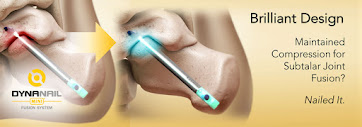Intramedullary Nail Fixation - All You Need to Know

Intramedullary nailing is a type of surgery that repairs broken or diseased bones to keep them stable and help facilitate fusion. In this surgery, a permanent nail, i.e., an intramedullary nail or a rod is placed in the centre of the bone, so it would enable you to put weight on the bone. Typically this bone fixation procedure is carried out mostly in the Femur, Tibia, hip, and Humerus. Evolution of Hindfoot Fusion Intramedullary Nail Fixation During the 1 st generation of hindfoot fusion nailing surgery, there was no application of compression; instead, the nails were locked into the bone with screws. The 2 nd generation nail fixation applied external manual compression through the frame. 3 rd generation introduced internal compression by using an internal screw to press against the calcaneal screw. However with all these earlier generation nails, the bones are able to retain compression after the instruments are removed but would lose compression upon any bone resorption or s...






